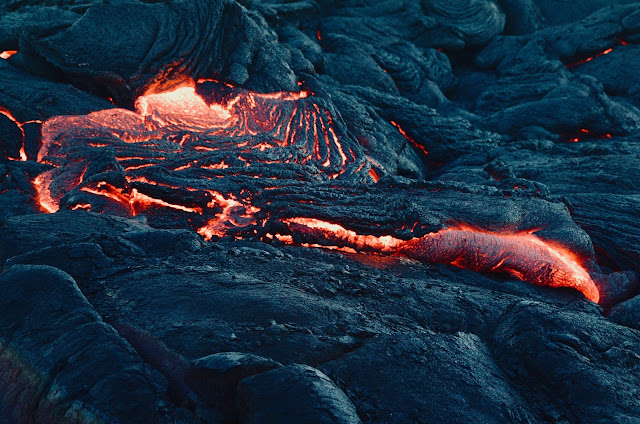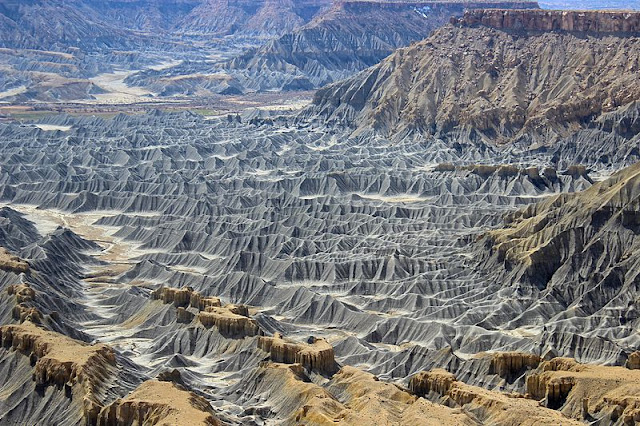Geology:
 |
| Geology |
Geology is the study of the Earth and its history. It includes the study of the physical and chemical properties of rocks, minerals, and the processes that shape the Earth. There are many branches of geology, including:
 |
| Mineralogy |
Mineralogy:
Mineralogy is the study of minerals, including their properties, structures, and the ways in which they form. Minerals are naturally occurring, inorganic substances that have a specific chemical composition and a unique set of physical and chemical properties. They can be found in a variety of environments, including rocks, soils, and bodies of water.
Mineralogists study the characteristics of minerals, such as their hardness, color, luster, and specific gravity, and use these properties to identify and classify different minerals. They also study the ways in which minerals form and the processes that can alter their composition and structure.
Mineralogy is an important field in geology because minerals are the building blocks of rocks and are often used as resources in various industries, such as construction, manufacturing, and medicine. Understanding the properties and behavior of minerals is essential for extracting and using these resources in a responsible and sustainable way.
 |
| Petrology |
Petrology:
Petrology is the study of rocks and the processes that form them. Rocks are made up of one or more minerals, and they can be classified based on their composition, texture, and the way in which they formed. Petrologists study the properties and characteristics of rocks to understand the conditions under which they formed and to classify them into different types.
There are three main types of rocks: igneous, sedimentary, and metamorphic. Igneous rocks form when molten rock (magma) solidifies, either on the surface of the Earth or underground. Sedimentary rocks form when sediment, such as sand, silt, and clay, is deposited and then compacted and cemented together. Metamorphic rocks form when other types of rocks are subjected to high temperatures and pressures, such as those that occur deep underground.
Petrologists use a variety of tools and techniques to study rocks, including microscopes, spectroscopy, and geochemical analyses. They may also use field observations and experiments to understand the processes that shape the Earth's crust and the geologic history of different regions.
 |
| Sedimentology |
Sedimentology:
Sedimentology is the study of sedimentary rocks and the processes that form them. Sedimentary rocks are formed through the accumulation, transportation, and deposition of sediment, such as sand, silt, and clay. These materials can be transported by wind, water, ice, or gravity, and they can be deposited in a variety of environments, including rivers, lakes, oceans, and deserts.
Sedimentologists study the characteristics of sedimentary rocks, such as their composition, texture, and structure, to understand the processes that formed them and the environments in which they formed. They also use field observations and laboratory techniques to study modern sedimentary processes, such as the transport of sediment by rivers or the formation of sand dunes, in order to better understand the history of the Earth's surface.
Sedimentology is an important field in geology because sedimentary rocks contain many of the Earth's fossil fuels, such as coal and oil, and because they provide a record of the Earth's past climate and environment. Studying sedimentary rocks can help us understand the history of life on Earth and the changes that have occurred over time.
 |
| Stratigraphy |
Stratigraphy:
Stratigraphy is the study of the layers of rock that make up the Earth's crust. These layers, called strata, are formed through the accumulation of sediment over time, and they can be found on the surface of the Earth or beneath the surface. Stratigraphy is an important field in geology because the layers of rock contain a record of the Earth's history, including the history of life on Earth, the climate and environment of different periods, and the geologic processes that have shaped the Earth's crust.
Stratigraphy is based on the principles of relative dating, which is the process of determining the order in which events occurred without knowing the exact ages of the events. Stratigraphers use various techniques to study the layers of rock, including field observations, laboratory analyses, and the study of fossils and other indicators of past environments.
Stratigraphy is often used in conjunction with other fields of geology, such as paleontology and sedimentology, to understand the Earth's history and the evolution of life on Earth. It is also important in the fields of engineering and resource exploration, as it can help to identify the location and quality of resources such as oil, gas, and minerals.
 |
| Structural geology |
Structural geology:
Structural geology is the study of the forces that have shaped the Earth's crust and the structures that have formed as a result. These structures can be visible on the surface of the Earth, such as mountains and valleys, or they can be hidden beneath the surface, such as folds and faults. Structural geologists study the way in which rocks deform and how these deformations relate to the geologic history of a region.
Structural geologists use a variety of tools and techniques to study the Earth's crust, including field observations, mapping, and geophysical techniques such as seismic surveys. They may also use laboratory techniques, such as X-ray diffraction and microstructural analyses, to study the properties of rocks and the processes that have affected them.
Structural geology is an important field in geology because it helps us understand the forces that have shaped the Earth's crust and how these forces have changed over time. It is also relevant to the fields of engineering and resource exploration, as it can help to identify the location and quality of resources such as oil, gas, and minerals.
 |
| Volcanology |
Volcanology:
Volcanology is the study of volcanoes and volcanic processes. Volcanoes are openings in the Earth's surface through which molten rock (magma) and ash can be erupted. They can be found on land and under the oceans, and they are caused by the movement of tectonic plates and the release of pressure in the Earth's crust.
Volcanologists study the different types of volcanoes, including stratovolcanoes, shield volcanoes, and cinder cones, and the processes that lead to volcanic eruptions. They use a variety of tools and techniques to study volcanoes, including field observations, geochemical analyses, and geophysical techniques such as seismic surveys.
Volcanology is an important field in geology because volcanic eruptions can have significant impacts on the environment and on human communities. Volcanologists work to understand the hazards associated with volcanic eruptions and to develop strategies for mitigating these hazards. They also study the ways in which volcanoes can contribute to the formation and evolution of the Earth's crust and the ways in which they can be used as resources.
 |
| Earthquake seismology |
Earthquake seismology:
Earthquake seismology is the study of earthquakes and the Earth's interior through the analysis of seismic waves. Earthquakes are caused by the movement of tectonic plates, and they can result in the release of energy that travels through the Earth in the form of waves. Seismologists use specialized instruments called seismometers to detect and measure these waves, and they use the information they gather to study earthquakes and the structure of the Earth's interior.
Seismologists use various techniques to analyze seismic data, including waveform analysis, inversion, and imaging. They can use this information to determine the location, size, and depth of an earthquake, and to study the characteristics of the Earth's interior, such as the composition and structure of the crust and mantle.
Earthquake seismology is an important field in geology because it helps us to understand the processes that shape the Earth's crust and to predict and mitigate the hazards associated with earthquakes. It is also relevant to the fields of civil engineering and resource exploration, as it can help to identify the location and quality of resources such as oil, gas, and minerals.
 |
| Geomorphology |
Geomorphology:
Geomorphology is the study of landforms and the processes that create them. Landforms are the visible features of the Earth's surface, such as mountains, valleys, and plains, and they are shaped by a variety of forces, including the movement of tectonic plates, the action of water, wind, and ice, and the erosive power of weathering and erosion.
Geomorphologists study the characteristics of landforms and the processes that shape them, including erosion, transportation, and deposition of sediment, and they use this information to understand the history and evolution of the Earth's surface. They use a variety of tools and techniques to study landforms, including field observations, mapping, and geophysical and geochemical analyses.
Geomorphology is an important field in geology because it helps us to understand the processes that shape the Earth's surface and the ways in which these processes have changed over time. It is also relevant to the fields of civil engineering, resource exploration, and environmental science, as it can help to predict the behavior of natural systems and to manage and protect the Earth's resources and environment.
 |
| Hydrogeology |
Hydrogeology:
Hydrogeology is the study of the movement, distribution, and quality of water on Earth. It is a multidisciplinary field that combines principles from geology, hydrology, and geochemistry to understand the behavior of water in the Earth's subsurface.
Hydrogeologists study the properties of water, such as its temperature, chemical composition, and ability to move through different types of rock and soil. They use this information to understand how water moves through the Earth's subsurface, how it is stored and released, and how it interacts with the surrounding rock and soil.
Hydrogeologists use a variety of tools and techniques to study water in the Earth's subsurface, including field observations, drilling, and geophysical and geochemical analyses. They may also use computer models to predict the behavior of water in different environments.
Hydrogeology is an important field in geology because it helps us to understand the availability and quality of underground water resources and to manage and protect these resources. It is also relevant to the fields of civil engineering, agriculture, and environmental science, as it can help to predict the behavior of natural systems and to manage the impact of human activities on the Earth's water resources.
 |
| Paleontology |
Paleontology:
Paleontology is the study of fossils and the history of life on Earth. Fossils are the remains or evidence of ancient organisms that have been preserved in the Earth's crust. They can include bones, shells, plant remains, and trace fossils such as tracks and burrows.
Paleontologists study fossils to understand the evolution of life on Earth and the changes that have occurred in the Earth's environment over time. They use a variety of tools and techniques to study fossils, including field observations, laboratory analyses, and the use of computer models and simulations.
Paleontology is an important field in geology because it helps us to understand the history of life on Earth and the ways in which different organisms have adapted to changing environments. It is also relevant to the fields of evolutionary biology, ecology, and medicine, as it can provide insight into the evolution of different species and the mechanisms of adaptation and survival.
There are also many subfields of geology that focus on specific regions of the world or specific aspects of the Earth's history.


